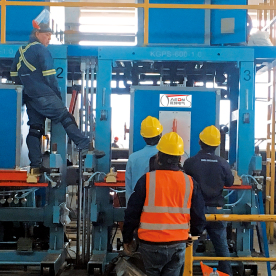[High frequency welder for plastic]Understanding High Frequency Welders for Plastic: Applications, Benefits, and Operational Insights
****
High frequency welders for plastic are revolutionizing the way manufacturers approach joining and fabricating plastic materials. As industries demand more efficient and reliable methods for creating strong, durable joins in plastics, high frequency welding has emerged as a preferred technique due to its speed, precision, and capability to handle various thicknesses and types of materials.
What is High Frequency Welding?
High frequency welding, also known as radio frequency (RF) welding, is a process that utilizes electromagnetic waves to generate heat within plastic materials. This heat causes the surface of the plastics to melt, allowing them to bond together as the welder presses the two pieces against each other. The key advantage of high frequency welding is that it can achieve high-quality and hermetic joins without requiring additional bonding agents or adhesives. This technique is particularly effective for materials like PVC, PU, and other thermoplastics.
Applications of High Frequency Welders in Plastic Fabrication

Understanding High Frequency Welders for Plastic: Applications, Benefits, and Operational Insights
The versatility of high frequency welders makes them an essential tool in various industries. Here are some notable applications:
1. **Automotive Industry:** In the automotive sector, high frequency welders are used to create components such as airbags, seat covers, and other plastic parts. The speed and reliability of this welding method ensure that manufacturers can produce high-quality parts that meet strict safety and performance standards.
2. **Medical Equipment Manufacturing:** Medical devices often require precise and sterile bonding methods. High frequency welding allows manufacturers to create seamless joins in medical bags, tubing, and various disposable items, ensuring that the integrity of the product remains intact and hygienic.
3. **Textiles:** High frequency welding is utilized in creating waterproof seams for outdoor gear, tarps, and tents. The process allows for the production of strong and weather-resistant products without compromising the flexibility and lightweight nature of the materials.
4. **Packaging:** In the packaging industry, high frequency welding is employed to produce plastic bags, containers, and pouches. This method not only enhances the strength of the packages but also enables manufacturers to cut down on material waste, as it allows for more efficient use of plastic sheets.
5. **Consumer Products:** Various consumer products, including inflatable items and complex plastic shapes, benefit from high frequency welding. This process enables manufacturers to achieve the necessary structural integrity without compromising the aesthetics of the products.
Benefits of High Frequency Welding
The adoption of high frequency welders for plastic offers numerous benefits, making it a go-to solution for many manufacturing needs:

Understanding High Frequency Welders for Plastic: Applications, Benefits, and Operational Insights
1. **Speed and Efficiency:** High frequency welding is a fast process, allowing for high production rates. The ability to quickly produce strong joins means that manufacturers can complete orders in shorter time frames, enhancing overall productivity.
2. **Quality Control:** The precision of high frequency welding reduces the risk of defects. This is particularly important in industries where quality cannot be compromised. Strong, consistent welds translate into fewer product returns and greater customer satisfaction.
3. **Cost-Effectiveness:** While the initial investment in high frequency welding equipment can be significant, the savings in materials and labor costs typically outweigh this expense. The reduction in waste and the need for adhesives translates into lower long-term operating expenses.
4. **Environmentally Friendly:** By eliminating the need for adhesives and other bonding agents, high frequency welding is a more sustainable manufacturing option. The process generates fewer by-products and allows for better recyclability of the packaged materials.
5. **Versatility:** High frequency welders are adaptable to different products and can be adjusted for various thicknesses and types of plastics. This flexibility allows manufacturers to diversify their production lines without significant additional investment.
Operational Insights
For companies looking to implement high frequency welders for plastic, understanding the operational requirements is essential. Factors to consider include:
– **Training:** Proper training for operators will ensure that the welders are used effectively and safely. – **Maintenance:** Regular maintenance of welding machines is crucial for optimizing their lifespan and ensuring consistent quality. – **Material Compatibility:** Knowing the types of plastics that work well with high frequency welding is vital to maximize effectiveness.
Conclusion

Understanding High Frequency Welders for Plastic: Applications, Benefits, and Operational Insights
High frequency welders for plastic offer a powerful solution for a variety of industries, providing speed, quality, and cost savings. As manufacturing processes evolve, this technology continues to play a crucial role in enhancing production efficiency and product performance. By understanding the applications and benefits, manufacturers can make informed decisions on incorporating high frequency welding into their operations, ensuring they stay ahead in a competitive market.Customized pipe mill production line solutions
